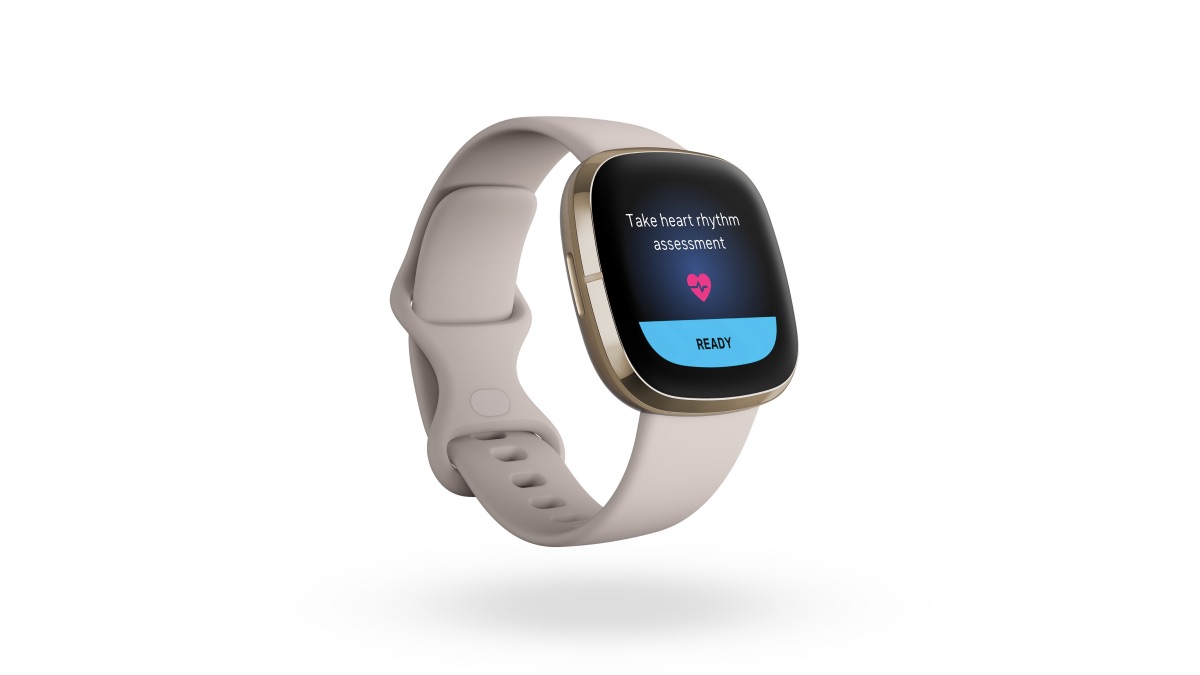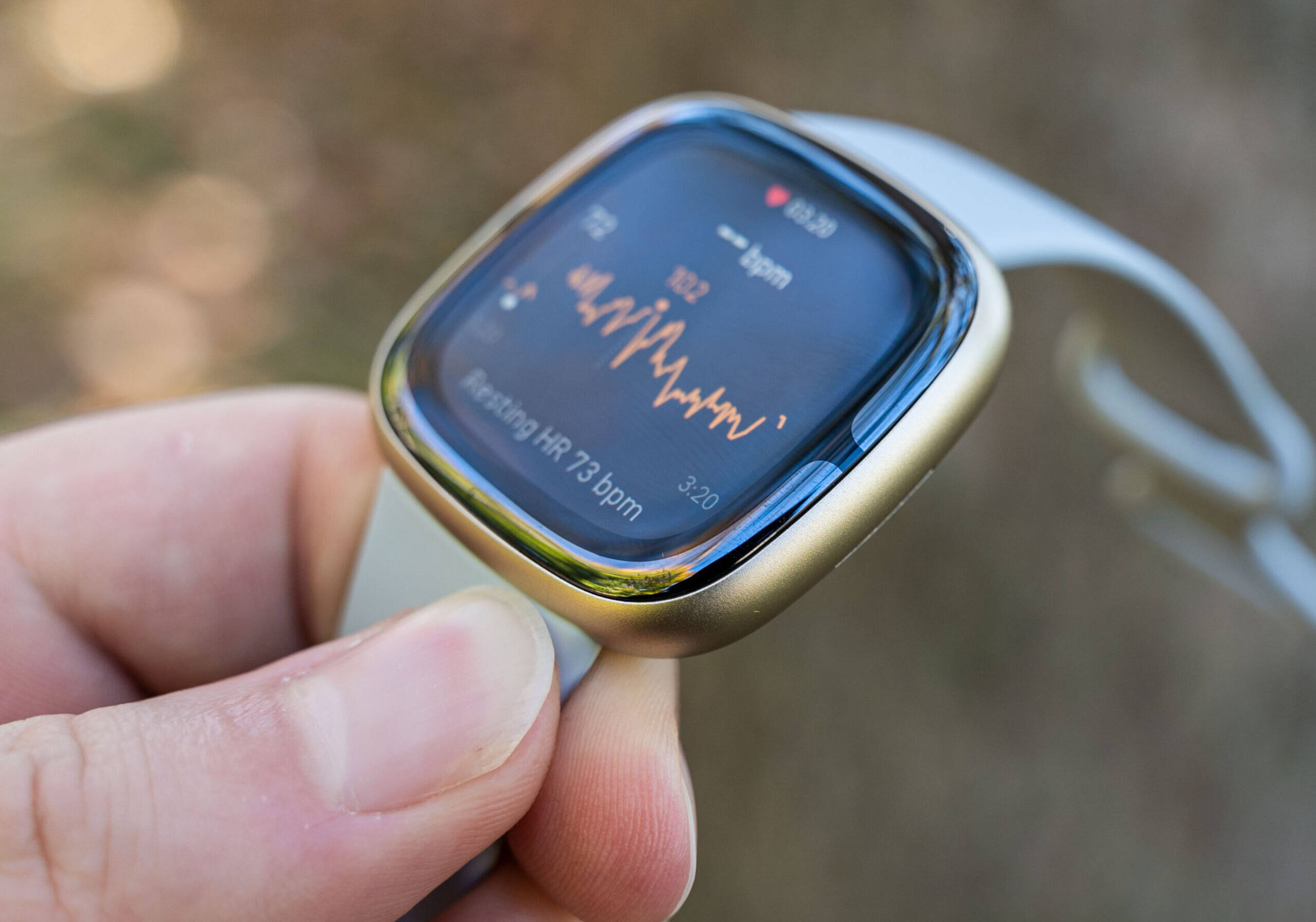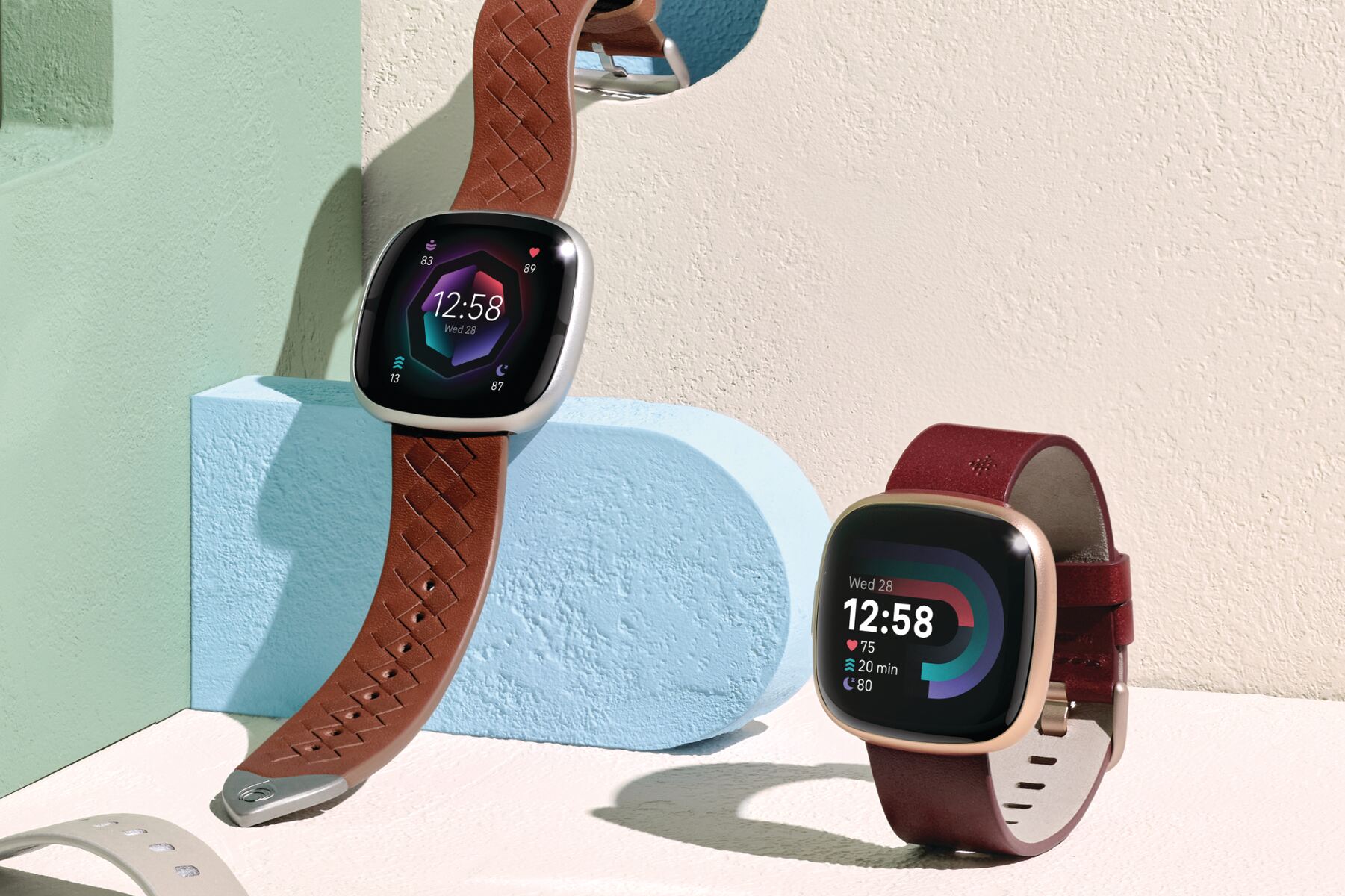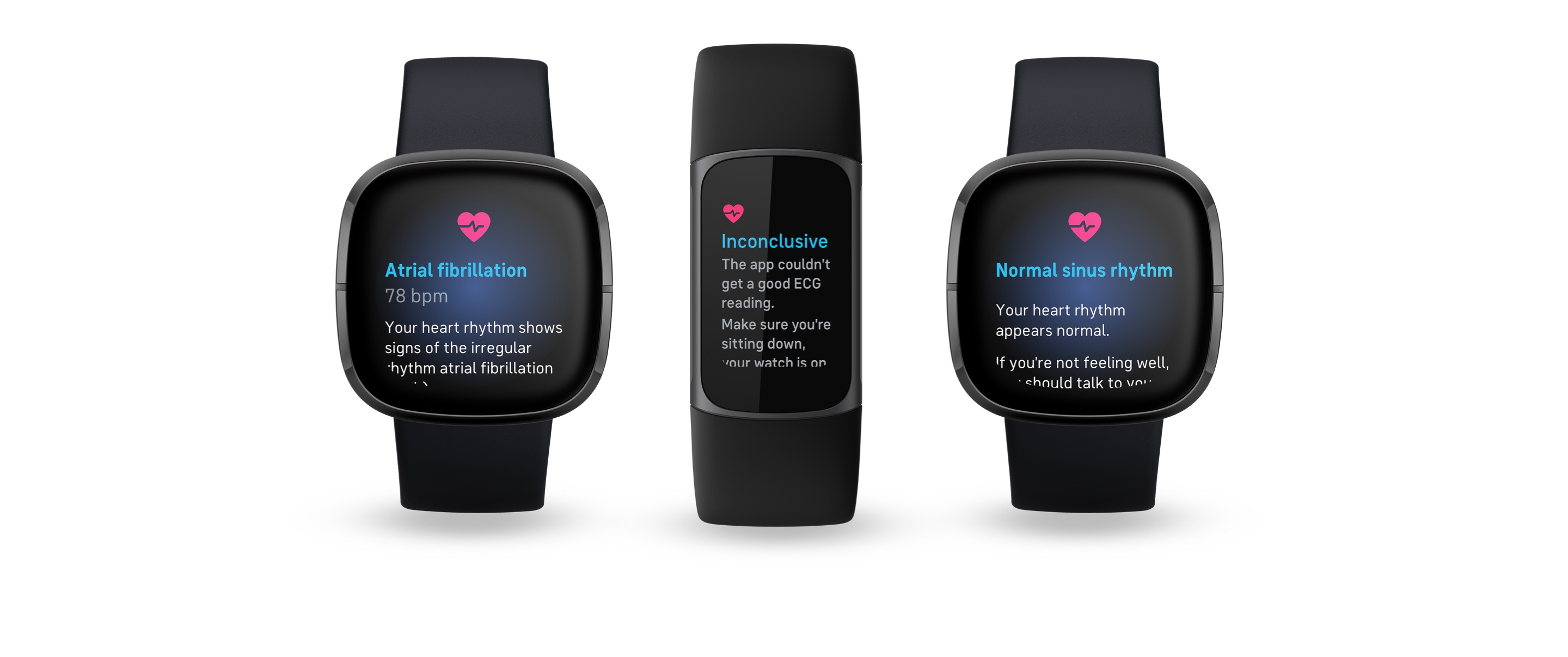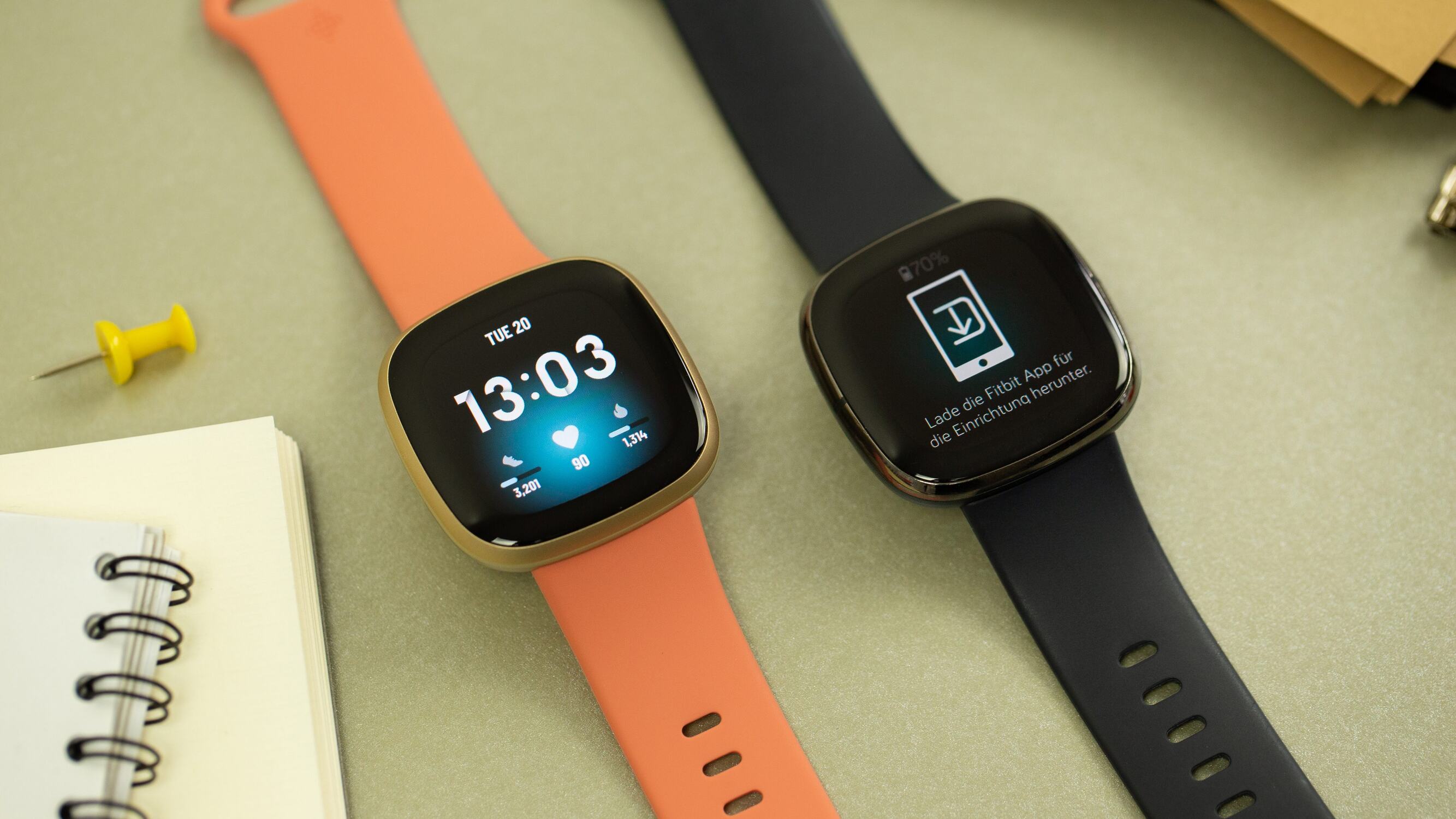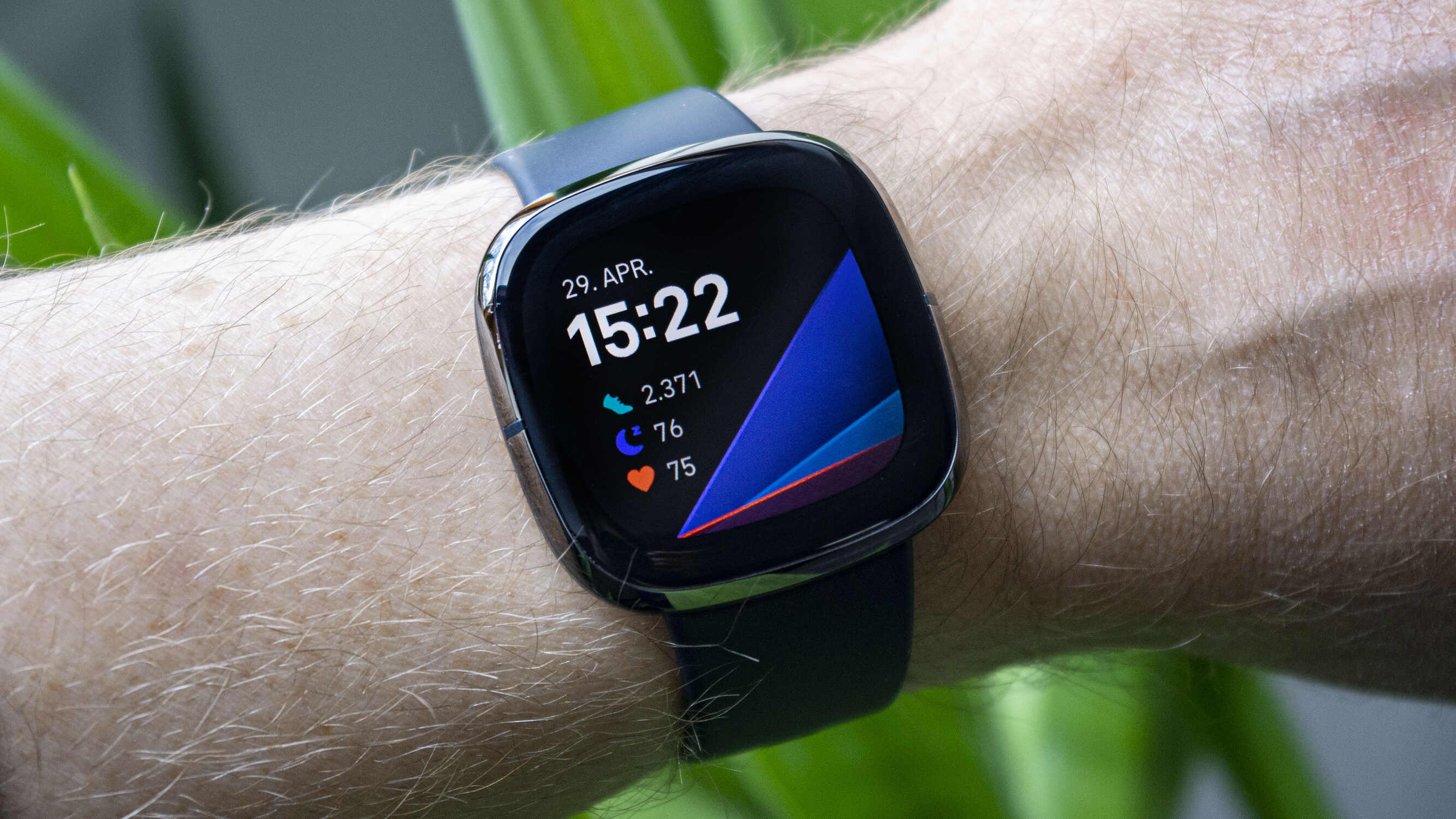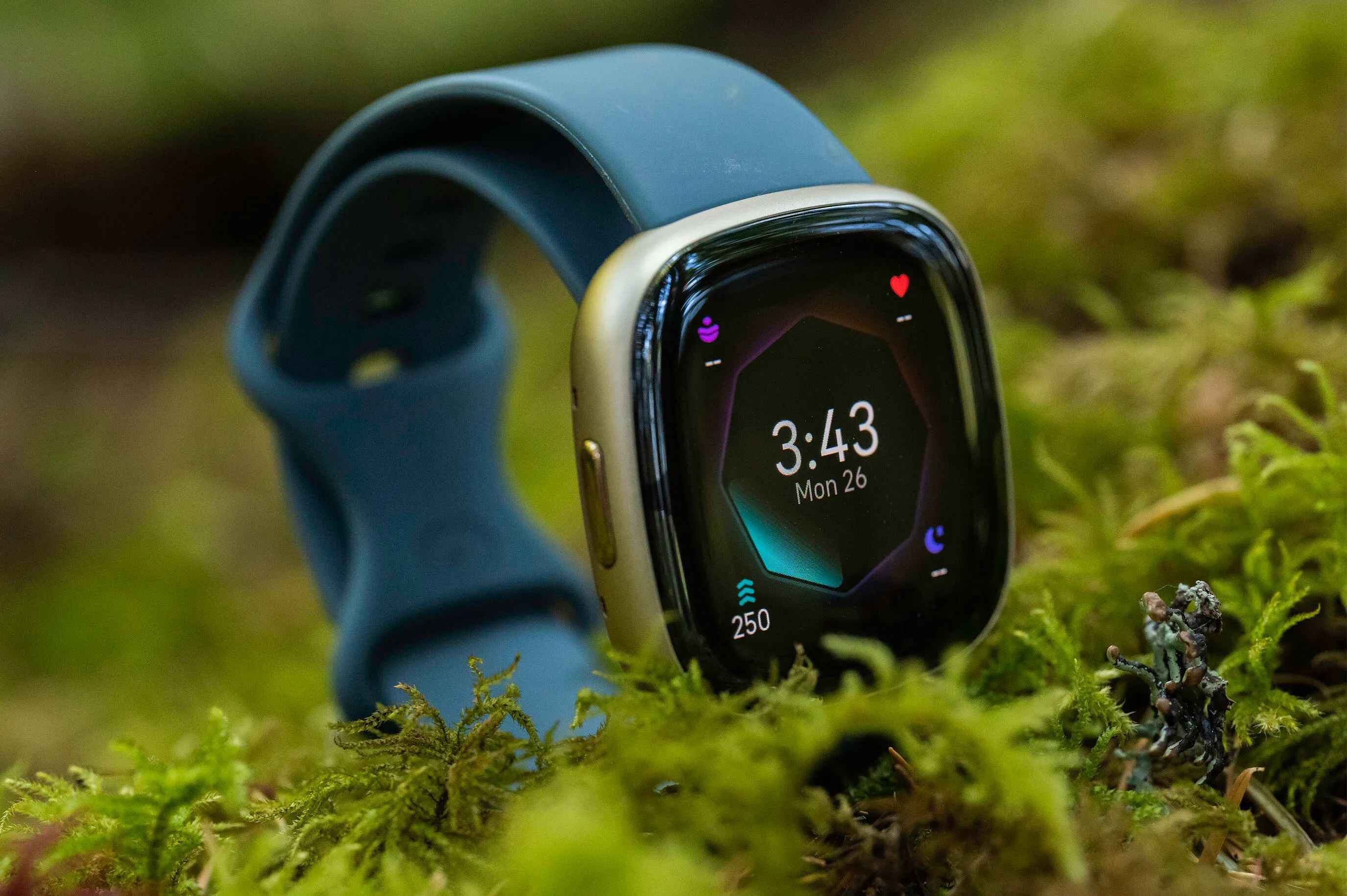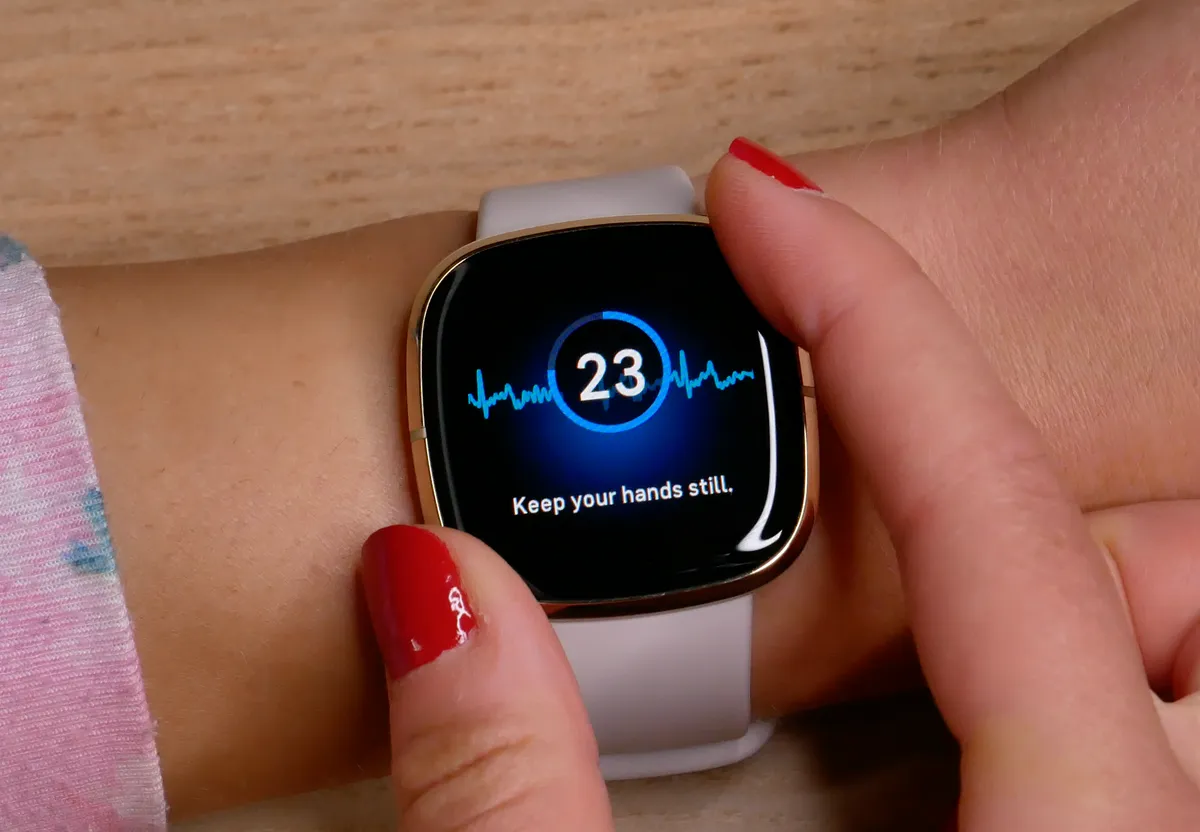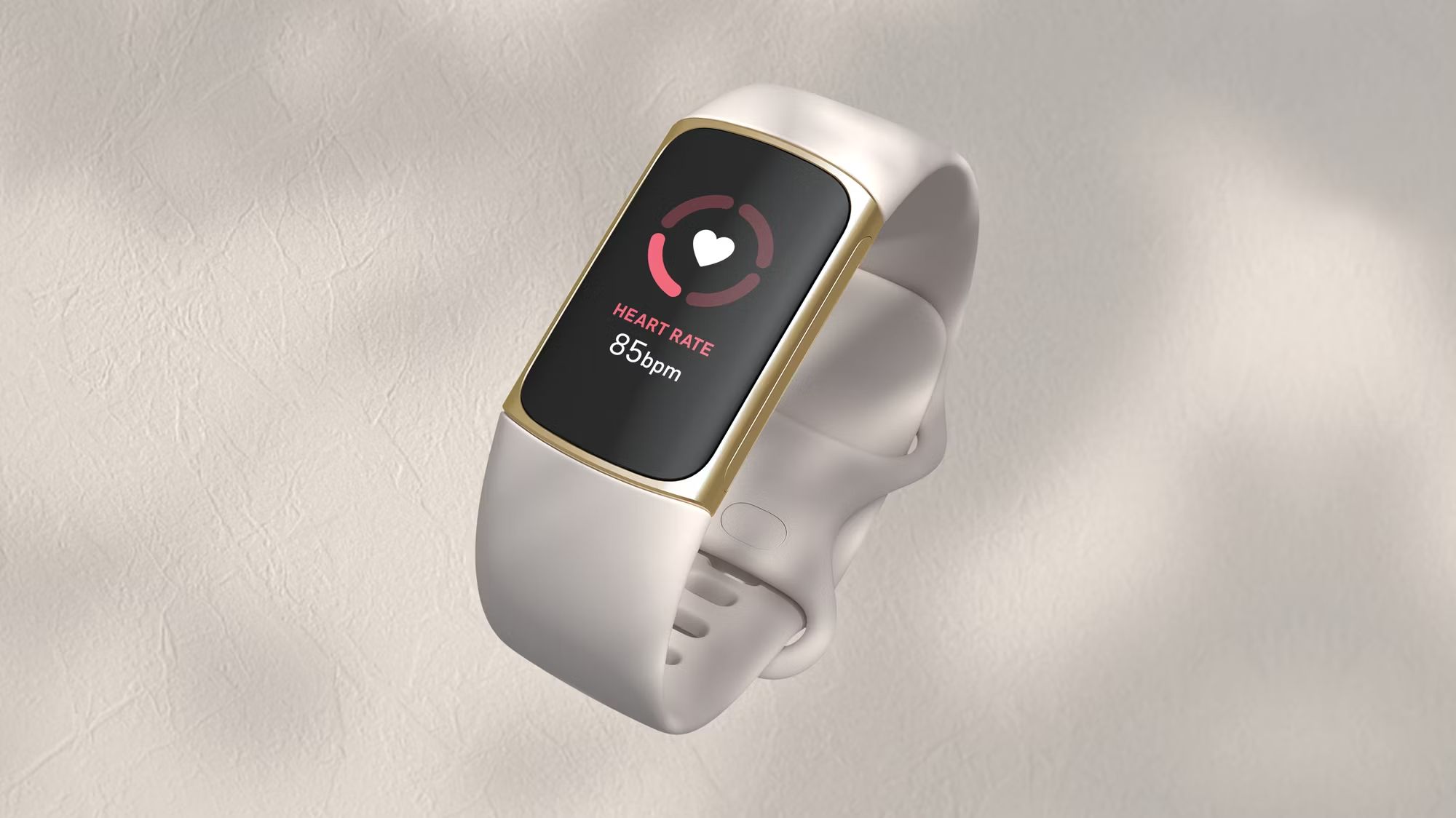Introduction
The Fitbit Sense is a remarkable wearable device that offers an array of advanced health monitoring features, including the capability to perform an electrocardiogram (ECG). This powerful functionality empowers users to take charge of their cardiovascular health by providing valuable insights into their heart's electrical activity. ECG, also known as EKG, is a non-invasive test that records the heart's rhythm and electrical activity, aiding in the detection of irregularities that may indicate potential cardiac issues.
With the Fitbit Sense, individuals can conveniently perform ECG readings on their own, providing them with a deeper understanding of their heart health. This innovative technology brings the expertise of ECG monitoring to the wrists of users, allowing for proactive health management and early detection of potential concerns.
As we delve into the intricacies of using ECG on the Fitbit Sense, it's important to recognize the significance of this feature in promoting proactive health monitoring. By harnessing the power of ECG technology, users can gain valuable insights into their heart's electrical patterns, enabling them to make informed decisions about their well-being. This introduction sets the stage for a comprehensive exploration of ECG usage on the Fitbit Sense, aiming to equip users with the knowledge and confidence to leverage this cutting-edge functionality for their health benefit.
Understanding ECG
An electrocardiogram (ECG) is a diagnostic tool that measures the electrical activity of the heart. This non-invasive test is crucial in detecting irregularities in the heart's rhythm and identifying potential cardiac issues. By capturing the heart's electrical signals, an ECG provides valuable insights into the overall health of the heart, aiding in the diagnosis and monitoring of various heart conditions.
The ECG process involves placing electrodes on specific areas of the body, such as the chest, arms, and legs. These electrodes detect the electrical impulses generated by the heart, which are then recorded and displayed as a series of waveforms on the ECG report. Each waveform represents a different phase of the cardiac cycle, offering detailed information about the heart's performance.
One of the primary components of an ECG is the P wave, which represents the electrical impulse that stimulates the atria to contract. This is followed by the QRS complex, indicating the depolarization of the ventricles and the subsequent contraction of the heart's main pumping chambers. Finally, the T wave reflects the repolarization of the ventricles, preparing them for the next cycle.
Understanding the significance of these waveforms is essential in interpreting ECG results. For instance, an irregularity in the duration or morphology of the QRS complex may indicate potential issues with the heart's electrical conduction system. Similarly, abnormalities in the ST segment or T wave could signal myocardial ischemia or other cardiac conditions.
In the context of the Fitbit Sense, the ECG feature empowers users to gain a deeper understanding of their heart's electrical activity. By leveraging this technology, individuals can monitor their heart rhythm and detect any irregularities that may warrant further medical attention. This proactive approach to heart health enables early detection of potential cardiac issues, fostering a proactive and informed approach to overall well-being.
In essence, understanding ECG goes beyond recognizing the waveforms on a report. It encompasses the ability to interpret these waveforms in the context of cardiac health, enabling individuals to take charge of their cardiovascular well-being. With the Fitbit Sense, users have the opportunity to engage with ECG technology in a user-friendly and accessible manner, promoting a proactive and informed approach to heart health management.
Setting Up ECG on Fitbit Sense
Setting up the ECG feature on your Fitbit Sense is a straightforward process that enables you to harness the power of electrocardiogram technology for proactive heart health monitoring. To initiate this functionality, begin by ensuring that your Fitbit Sense is securely fastened to your wrist. Once the device is comfortably positioned, proceed to open the Fitbit app on your smartphone, which serves as the central hub for managing and configuring your Fitbit Sense.
Within the Fitbit app, navigate to the "Today" tab, where you will find your Fitbit Sense listed among your connected devices. Select the Fitbit Sense to access its settings and features. From here, locate and tap on the "ECG" option, which will initiate the setup process for this innovative functionality.
Upon selecting the "ECG" option, the app will guide you through the setup procedure, which includes carefully reviewing and acknowledging important information regarding the use and limitations of ECG on the Fitbit Sense. It is imperative to thoroughly read and understand this information, as it provides essential insights into the capabilities and intended use of the ECG feature.
Following this, you will be prompted to ensure that your Fitbit Sense is snugly positioned on your wrist and that the device's sensors are in contact with your skin. This step is crucial for obtaining accurate ECG readings and ensuring the reliability of the data captured by the device.
Once these prerequisites are met, the app will proceed to verify your identity and age to comply with regulatory requirements for using the ECG feature. This verification process is fundamental in ensuring that the ECG functionality is utilized responsibly and in accordance with established guidelines.
Upon successful completion of the setup process, your Fitbit Sense will be equipped to perform ECG readings, providing you with valuable insights into your heart's electrical activity. This seamless setup process empowers users to engage with ECG technology in a user-friendly and accessible manner, fostering a proactive and informed approach to heart health management.
By following these simple steps, you can activate the ECG feature on your Fitbit Sense and embark on a journey of proactive heart health monitoring, leveraging the power of ECG technology to gain valuable insights into your cardiovascular well-being.
Taking an ECG Reading
Taking an ECG reading with the Fitbit Sense is a seamless process that empowers users to gain valuable insights into their heart's electrical activity. Once the ECG feature is set up and ready for use, initiating an ECG reading involves a few simple steps that enable individuals to capture and analyze their heart's rhythm with ease.
To begin, ensure that your Fitbit Sense is comfortably positioned on your wrist, allowing the device's sensors to make direct contact with your skin. This optimal placement is essential for obtaining accurate ECG readings and ensuring the reliability of the captured data. With the device securely fastened, navigate to the ECG feature on your Fitbit Sense, typically accessed through the device's menu or designated ECG interface.
Once within the ECG feature, carefully follow the on-screen instructions to initiate the ECG reading. This may involve holding your fingers on specific parts of the Fitbit Sense's frame to enable the device to detect and record your heart's electrical signals. The device will prompt you to remain still and refrain from talking during the reading to minimize any potential interference and ensure the accuracy of the captured data.
As the ECG reading progresses, the Fitbit Sense diligently captures and processes your heart's electrical activity, generating a comprehensive report that provides valuable insights into your cardiovascular well-being. This report typically includes detailed information about the duration and morphology of the captured electrical signals, allowing you to gain a deeper understanding of your heart's rhythm and performance.
Upon completion of the ECG reading, the Fitbit Sense presents the captured data in a clear and accessible format, enabling you to review and interpret the results directly on the device or through the accompanying Fitbit app. This seamless integration of ECG technology into the Fitbit ecosystem empowers users to engage with their heart health in a user-friendly manner, fostering a proactive and informed approach to cardiovascular well-being.
By seamlessly capturing ECG readings with the Fitbit Sense, individuals can proactively monitor their heart's electrical activity, detect potential irregularities, and gain valuable insights into their cardiovascular health. This user-friendly process, combined with the advanced capabilities of the Fitbit Sense, exemplifies the seamless integration of cutting-edge technology into everyday health management, empowering users to take charge of their well-being with confidence and ease.
Interpreting ECG Results
Interpreting ECG results is a pivotal aspect of leveraging the ECG feature on the Fitbit Sense to gain valuable insights into cardiovascular health. Upon capturing an ECG reading, it is essential to understand and interpret the results to discern the implications for heart health.
The ECG report typically presents a series of waveforms that represent the heart's electrical activity during the recording. These waveforms, including the P wave, QRS complex, and T wave, offer crucial insights into the heart's rhythm and performance. Understanding the significance of these waveforms is fundamental in interpreting ECG results accurately.
Analyze the Duration and Morphology: Pay close attention to the duration and morphology of the waveforms. Anomalies in the duration or morphology of the QRS complex, for instance, may indicate potential issues with the heart's electrical conduction system. Similarly, irregularities in the ST segment or T wave could signal myocardial ischemia or other cardiac conditions.
Assess the Heart Rate: The ECG report provides valuable information about the heart rate during the recording. By analyzing the heart rate data, individuals can gain insights into the heart's overall performance and detect any irregularities that may warrant further attention.
Review Historical Data: In the context of the Fitbit Sense, users have the ability to review historical ECG data, enabling them to track changes in their heart's electrical activity over time. This longitudinal view of ECG results empowers individuals to identify trends and patterns, facilitating proactive monitoring of cardiovascular health.
Consult Healthcare Professionals: It is important to emphasize that while interpreting ECG results provides valuable insights, consulting healthcare professionals for in-depth analysis and guidance is crucial. Healthcare providers possess the expertise to interpret ECG results in the context of an individual's overall health and medical history, offering personalized recommendations and interventions when necessary.
By understanding and interpreting ECG results, individuals can harness the power of the Fitbit Sense's ECG feature to gain valuable insights into their heart's electrical activity. This proactive approach to heart health monitoring enables early detection of potential cardiac issues, fostering a sense of empowerment and informed decision-making regarding cardiovascular well-being.
Using ECG Data for Health Tracking
Leveraging the ECG data obtained from the Fitbit Sense holds immense potential for proactive health tracking and comprehensive cardiovascular well-being. The ECG feature on the Fitbit Sense empowers users to go beyond mere data collection, offering valuable insights that can be instrumental in guiding health-related decisions and fostering a deeper understanding of one's cardiovascular health.
Tracking Changes Over Time: The ability to track ECG data over time provides users with a longitudinal view of their heart's electrical activity. By monitoring changes in ECG patterns and identifying trends, individuals can gain valuable insights into the dynamic nature of their cardiovascular health. This longitudinal tracking facilitates the early detection of potential irregularities, enabling proactive interventions and informed discussions with healthcare professionals.
Personalized Health Insights: The ECG data captured by the Fitbit Sense serves as a foundation for personalized health insights. By analyzing the ECG reports and identifying patterns or anomalies, users can gain a deeper understanding of their heart's performance and rhythm. This personalized approach to health tracking empowers individuals to make informed lifestyle choices, monitor the impact of interventions, and take proactive steps to optimize their cardiovascular well-being.
Integration with Overall Health Monitoring: Integrating ECG data into the broader spectrum of health monitoring offered by the Fitbit Sense enhances the comprehensiveness of health insights. By correlating ECG data with metrics such as heart rate variability, physical activity, and sleep patterns, users can gain a holistic view of their well-being. This integration enables individuals to identify potential correlations between their heart's electrical activity and other aspects of their health, fostering a proactive and informed approach to overall well-being.
Facilitating Informed Discussions with Healthcare Professionals: The ECG data obtained from the Fitbit Sense serves as a valuable tool for facilitating informed discussions with healthcare professionals. By sharing ECG reports and historical data with clinicians, individuals can contribute to collaborative discussions about their cardiovascular health. This collaborative approach empowers users to actively engage in their health management, seek timely interventions, and receive personalized guidance from healthcare providers.
In essence, using ECG data for health tracking with the Fitbit Sense transcends traditional data collection, offering a pathway to proactive health management and informed decision-making. By harnessing the power of ECG technology, individuals can gain personalized insights, monitor changes over time, and actively contribute to discussions about their cardiovascular well-being, ultimately fostering a proactive and empowered approach to health tracking and management.
Precautions and Considerations
When utilizing the ECG feature on the Fitbit Sense, it is essential to be mindful of certain precautions and considerations to ensure the safe and effective use of this advanced functionality. These guidelines are designed to promote responsible engagement with ECG technology and maximize the benefits of proactive heart health monitoring.
Skin Contact and Fitbit Sense Positioning
To obtain accurate ECG readings, it is crucial to ensure that the Fitbit Sense is positioned securely on the wrist, allowing the device's sensors to maintain consistent contact with the skin. Any impediments to the sensor's contact with the skin, such as excessive movement or improper placement, may compromise the accuracy of the ECG data. Therefore, users should be mindful of the Fitbit Sense's positioning and strive to maintain optimal skin contact during ECG readings.
Regulatory Compliance and Age Verification
The ECG feature on the Fitbit Sense is subject to regulatory guidelines, necessitating the verification of the user's age to ensure compliance with established requirements. Users should accurately provide their age during the setup process, as this information is fundamental in aligning with regulatory standards for utilizing ECG technology. Adhering to these regulatory considerations is vital to responsibly leveraging the ECG feature for proactive health monitoring.
Interpretation and Consultation
While the ECG feature on the Fitbit Sense offers valuable insights into the heart's electrical activity, it is important to emphasize that ECG data should be interpreted in the context of overall health and medical history. Users are encouraged to consult healthcare professionals for in-depth analysis and guidance regarding ECG results. Healthcare providers possess the expertise to interpret ECG data accurately and offer personalized recommendations based on an individual's comprehensive health profile.
Limitations and Indications
It is imperative to recognize that while the ECG feature on the Fitbit Sense provides valuable insights, it is not intended to diagnose specific medical conditions. Users should be mindful of the limitations of ECG technology and understand that ECG data serves as a tool for proactive health monitoring rather than a definitive diagnostic tool. Any concerns or indications arising from ECG readings should prompt discussions with healthcare professionals for further evaluation and guidance.
User Responsibility and Informed Usage
Engaging with the ECG feature on the Fitbit Sense entails a degree of user responsibility and informed usage. Users should familiarize themselves with the operational guidelines and limitations of the ECG functionality, empowering themselves to utilize this technology in a conscientious and informed manner. By embracing a proactive and responsible approach to ECG usage, individuals can maximize the benefits of this advanced feature while prioritizing their cardiovascular well-being.
In essence, being mindful of these precautions and considerations is fundamental in fostering a safe, informed, and effective utilization of the ECG feature on the Fitbit Sense. By adhering to these guidelines, users can engage with ECG technology responsibly, gain valuable insights into their heart health, and contribute to proactive health management with confidence and awareness.
Conclusion
In conclusion, the integration of electrocardiogram (ECG) technology into the Fitbit Sense represents a significant advancement in empowering individuals to proactively monitor and manage their cardiovascular health. The seamless accessibility of ECG functionality on the Fitbit Sense transcends traditional healthcare paradigms, offering users the opportunity to engage with cutting-edge technology in a user-friendly and personalized manner.
By harnessing the power of ECG technology, individuals can embark on a journey of proactive heart health monitoring, gaining valuable insights into their heart's electrical activity and rhythm. The ability to capture ECG readings directly from the wrist exemplifies the convergence of advanced health monitoring and everyday wearables, fostering a sense of empowerment and informed decision-making regarding cardiovascular well-being.
The comprehensive understanding of ECG waveforms and the interpretation of ECG results enable users to discern potential irregularities, track changes over time, and contribute to informed discussions with healthcare professionals. This collaborative approach to heart health management, facilitated by the ECG feature on the Fitbit Sense, underscores the pivotal role of technology in promoting proactive and personalized healthcare.
Furthermore, the utilization of ECG data for health tracking offers individuals a longitudinal view of their cardiovascular well-being, enabling the identification of trends, correlations, and personalized health insights. This integration of ECG data with broader health monitoring metrics enhances the comprehensiveness of health insights, guiding informed lifestyle choices and proactive interventions.
It is imperative to emphasize that while ECG technology on the Fitbit Sense empowers users to gain valuable insights into their heart's electrical activity, it is not a replacement for professional medical advice or diagnostic services. The collaborative engagement with healthcare professionals remains essential for in-depth analysis, personalized recommendations, and interventions based on an individual's comprehensive health profile.
In essence, the incorporation of ECG technology into the Fitbit Sense epitomizes the convergence of advanced health monitoring, user-centric design, and proactive well-being. By embracing this innovative functionality, individuals can take proactive steps towards optimizing their cardiovascular health, fostering a sense of empowerment, awareness, and informed engagement with their well-being.







